Author : Jsquare Investment and Research Team
The cryptocurrency financing ecosystem has evolved rapidly since the creation of the Bitcoin genesis block in 2009. As blockchain projects explore new ways to raise capital, a variety of token issuance mechanisms have emerged, each shaped by market conditions, technological advances, and regulatory adaptations.
From ICO to STO: A timeline of token issuance mechanisms
Initial Coin Offering (ICO)
The first wave was initial coin offerings (ICOs), which exploded between 2016 and 2018. One of the earliest and most successful examples was Ethereum, which raised about $18 million in a public sale at $0.35 per ETH in 2014. ICOs peaked in 2018, raising more than $6 billion in total. However, investor protection is weak, fraud rates exceed 80%, and only about 44% of ICO projects remain active three months after issuance.
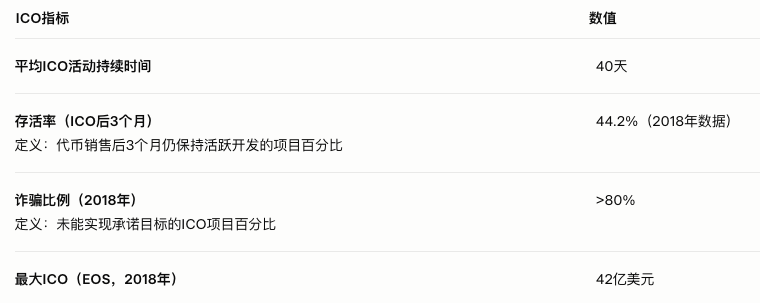
Source: https://icobench.com/stats/ico-statistics/
Initial Exchange Offering (IEO)
In response to the chaos of ICOs, Initial Exchange Offerings (IEOs) emerged around 2019, introducing a more standardized structure through centralized exchanges such as Binance Launchpad. These platforms conduct token reviews and compliance checks, which have increased the project survival rate to about 70-80% and significantly reduced the fraud rate to about 5-10%. However, listing fees, KYC requirements, and centralized control have brought limitations.
Below is an analysis of the average return on investment (ROI) of IEO projects since launch by exchange between 2009 and 2025:
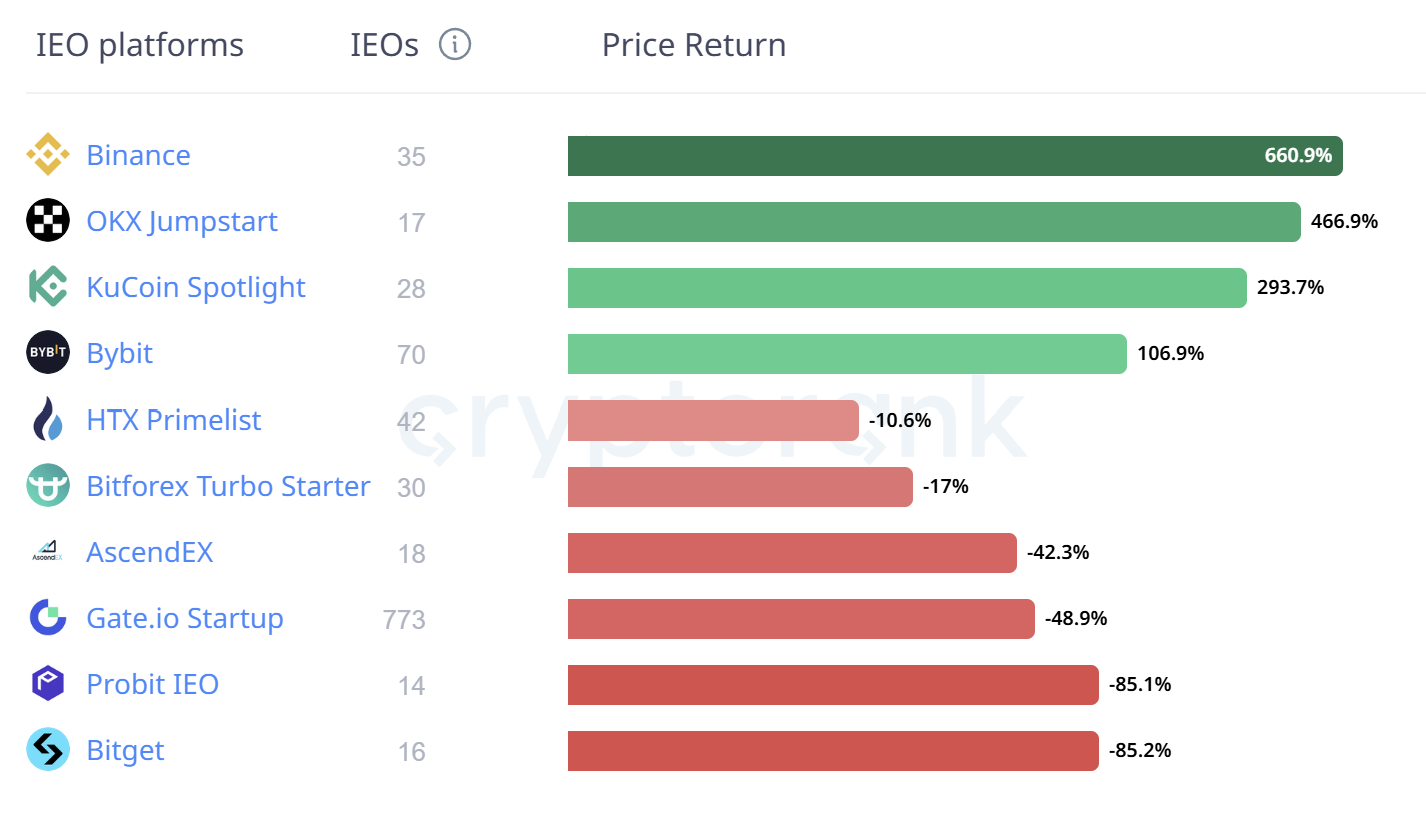
Source: https://cryptorank.io/ieo-platforms-roi
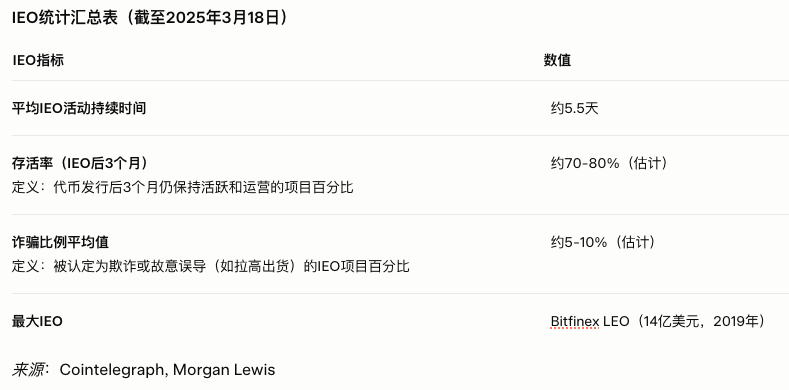
Security Token Offering (STO)
Security token offerings (STOs) introduce a regulated on-chain representation of traditional financial instruments such as equity or debt. STOs have the highest survival rate (85-95%) but remain niche due to complex legal structures, long campaign durations, and limited secondary market infrastructure.
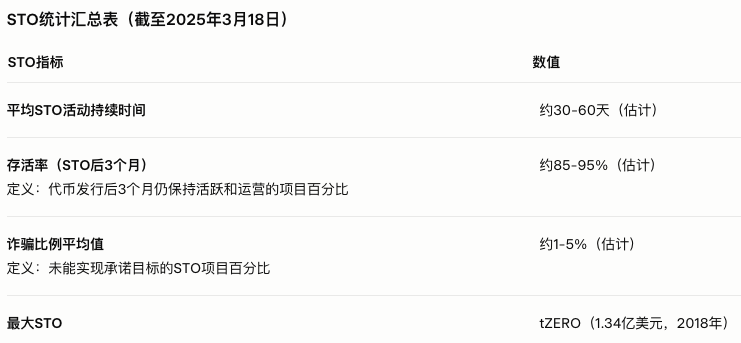
The Rise of IDOs and the New Era of Permissionless Issuance
Initial decentralized exchange offerings (IDOs) mark a major shift toward fully decentralized financing. Platforms such as Uniswap, Hyperliquid, and Pump.fun enable instant token issuance and liquidity access without high listing fees. However, this convenience comes with higher volatility and scam rates (estimated to be around 10-20%).
The following is an analysis of the average return on investment (ROI) of IDO projects since their issuance:

Source: https://cryptorank.io/ido-platforms-roi
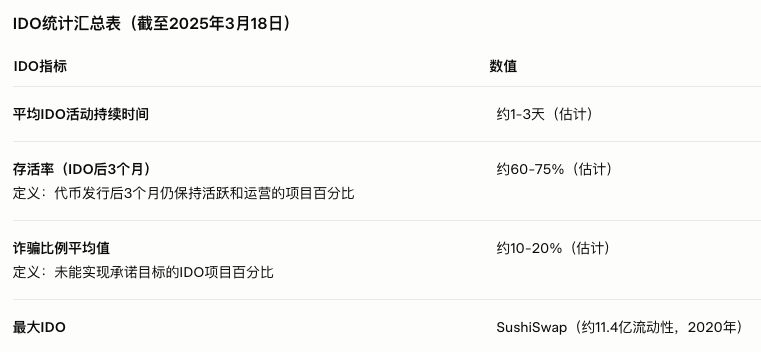
Platforms that promote IDOs
- Hyperliquid : A decentralized exchange (DEX) that uses a Dutch auction mechanism for token listing. Projects apply to deploy native HIP-1 tokens and participate in a 31-hour Dutch auction. The token deployment fee drops linearly from the initial price to $10,000 USDC.
- Pump.fun : A platform that simplifies the issuance and trading of meme tokens on the Solana blockchain. Users can easily and cheaply issue tokens, attracting investors who want to take advantage of viral token trends. However, the ease of token creation has led to a proliferation of low-quality projects.
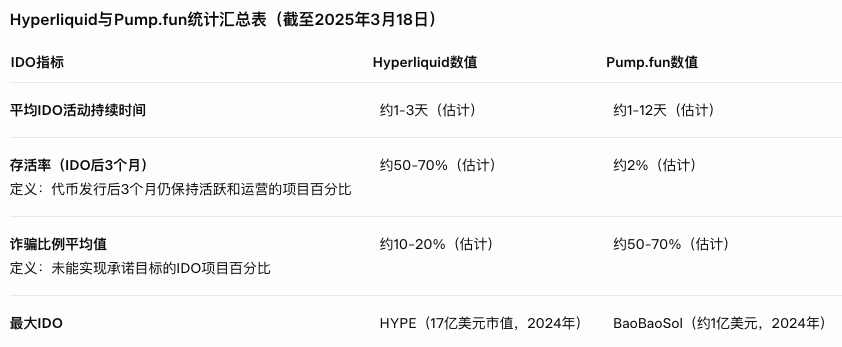
Comparison between IEO and IDO: A collision of two worlds
IEOs and IDOs offer projects very different financing pathways, each with its own unique advantages and challenges. IEOs provide a structured environment through exchange oversight, enhancing investor confidence, but at a higher cost and with limited participation. Exchange due diligence leads to more efficient pricing and reduced investment risk. In contrast, the lack of formal regulation and large number of IDOs lead to lower market efficiency and increased volatility.
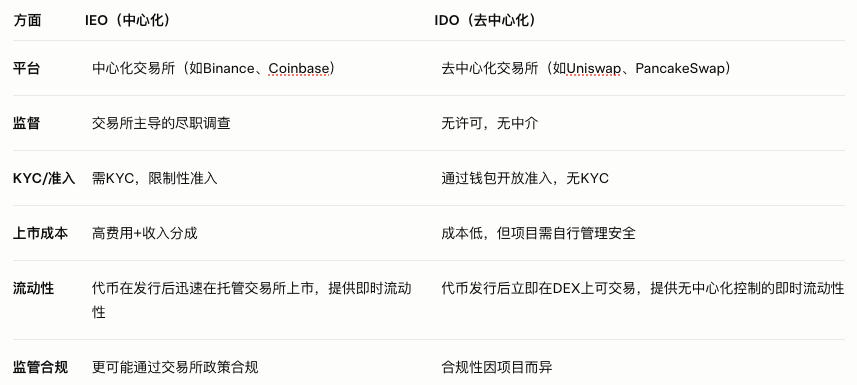
The road ahead: hybrid issuance models and regulatory shifts
Issuance mechanisms are not just technical tools, they shape capital allocation, investor engagement, and narrative formation. The future lies in hybrid models that combine on-chain liquidity and off-chain regulatory compliance.
New platforms such as Hyperliquid use a Dutch auction mechanism to achieve price discovery while keeping it structured. Pump.fun simplifies meme token issuance, riding the wave of virality, but with the risk of market saturation. Both models reflect the market’s desire for experimentation.
Meanwhile, policies in the United States and the European Union are creating clearer frameworks for token issuance. In the United States, the upcoming stablecoin framework and broader regulatory clarity under the Trump administration may affect the compliance of IDO platforms. In the European Union, MiCA (Markets in Crypto-Assets Regulation) sets a precedent for crypto-asset licensing, which may push projects toward regulatory-friendly structures.
Conclusion: Efficiency, Compliance, and Community
In 2025, IDOs are likely to remain the preferred choice for small, community-driven issuances, while IEOs and STOs will serve more institutional projects. What we are witnessing is not a competition of financing forms, but an evolution towards issuance strategies that balance accessibility, compliance, and investor protection. As platforms mature and regulation solidifies, hybrid issuance frameworks will define the next era of crypto capital formation.





